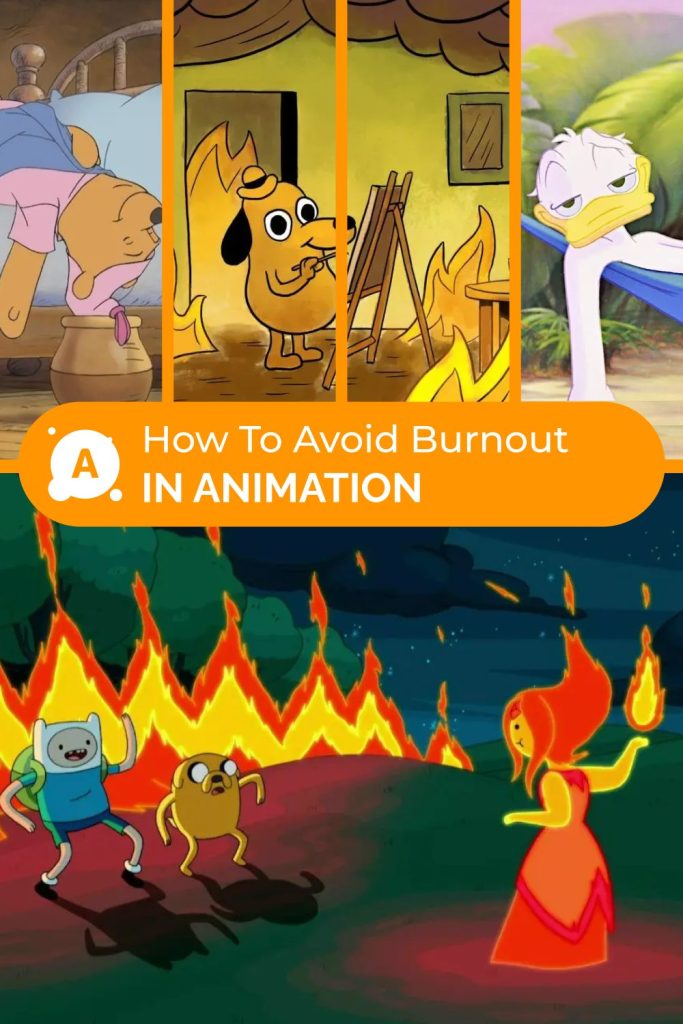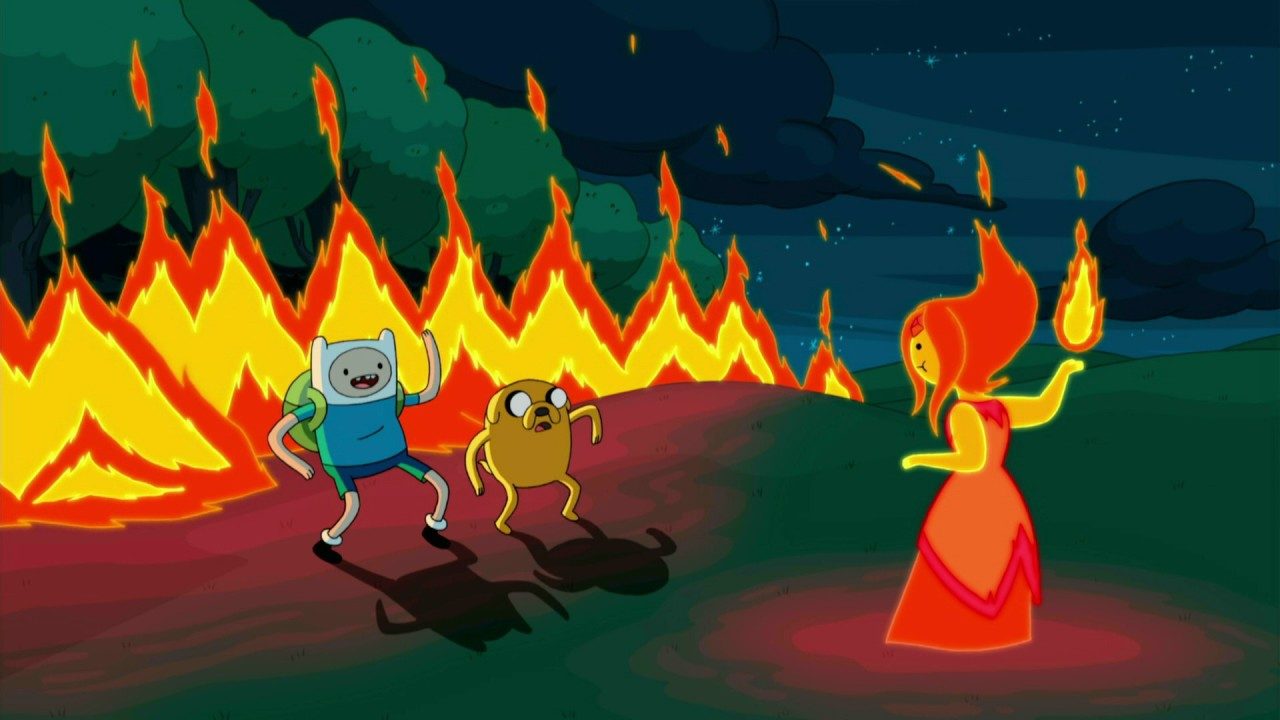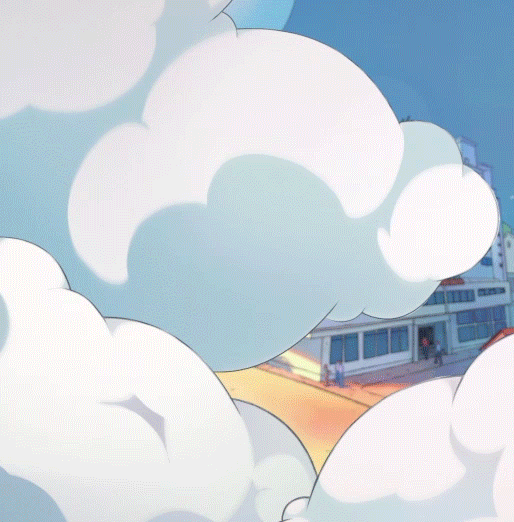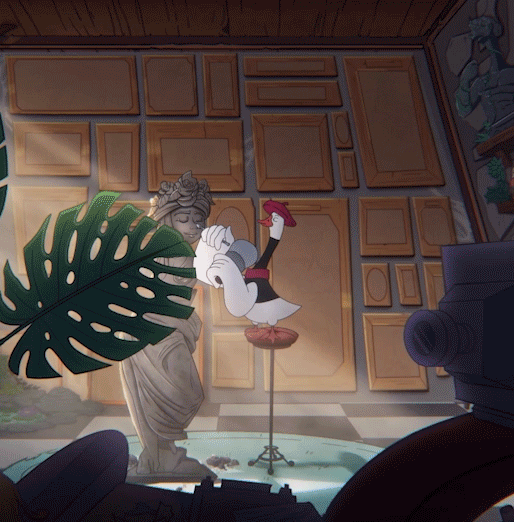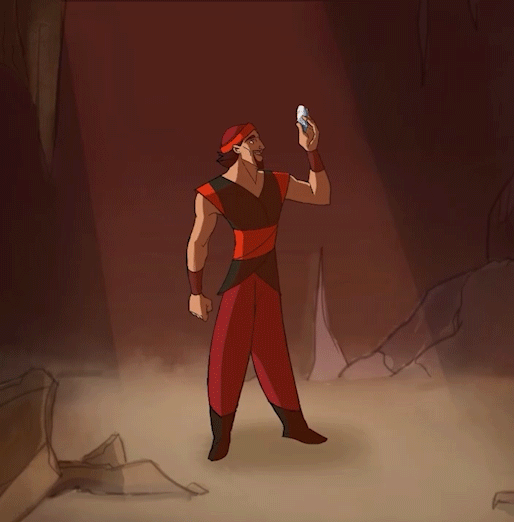Why This Topic Matters: Stay in the Industry for the Long Haul
Animation isn’t just a job – it’s often a way of life. You draw, you think in shots, you hear timing in your sleep. It can feel like true love from the moment you bring your first character to life, and they suddenly start to breathe, move, and exist. But love can be intense. Alongside the joy of creativity comes exhaustion, deadlines, overwork, and the creeping feeling that you no longer control your own time or energy. Bit by bit, your dream job turns into survival mode.
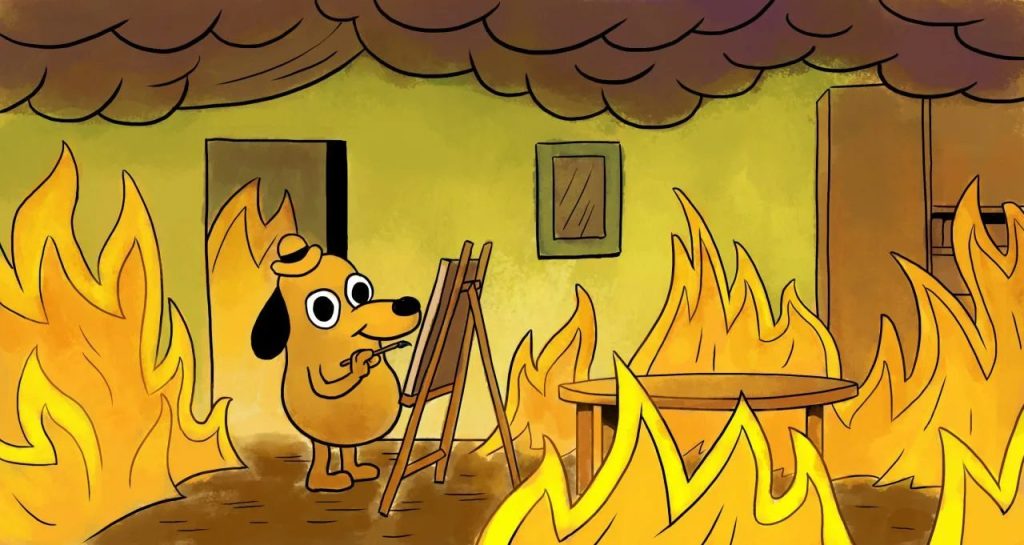
«This is Fine» meme
So why talk about this now? Because the animation industry is growing – and so are the demands on those of us working in it. Quality, speed, and adaptability – they’re all part of the game. But no one really teaches us how to sustain ourselves in the process. How to keep our energy up, our minds clear, and our passion alive. This article is about resilience, about protecting your inner spark, and about building a career that lasts more than just a few fast years.
Burnout Is Not a Weakness
Burnout doesn’t explode into your life – it sneaks in. At first, it’s just tiredness that doesn’t go away. Then it becomes irritated with tasks that used to be fun. Soon you’re still working, but it doesn’t feel like you anymore – it feels mechanical. Even the scenes that turn out well seem bland to you. You start thinking you’ve fallen out of love with animation, when in fact, you’re just exhausted.
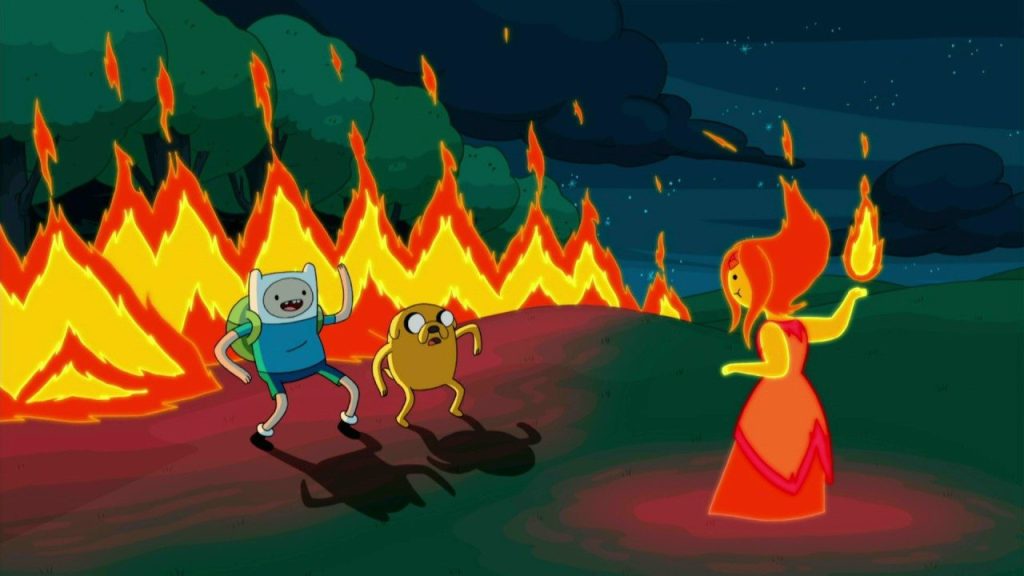
Adventure Time
This is a common story. But here’s the truth: burnout is not a flaw in your character. It’s a signal. It’s your system telling you something needs to change. If you ignore it and keep pushing, you risk losing not just your motivation – but your health. And nobody wants that.
How to recognize the signs of burnout
How the Industry Really Works
The production runs on momentum – and that momentum can be brutal. One week of work can feel like a sprint, with each day scheduled down to the minute. Reviews, revisions, redos… and even when you finish a shot, there’s always a chance it’ll get rewritten. At the same time, you’re juggling physics, emotion, pacing, character – and staying active in chats, reading feedback, and answering emails, all while being expected to stay creative.
It’s easy to forget you’re not a machine. If you work at full throttle all the time, your body and mind will eventually shut down. That’s why finding a healthy rhythm is so crucial. A rhythm where you don’t just deliver – you also live.
Why Great Animation Needs Rest
There’s a myth that the more hours you work, the better the result. In animation, that’s simply not true. Because a good shot isn’t just about time spent – it’s about the state of mind and body you’re in while creating it. If you’re sleep-deprived, your neck hurts, and your wrist is numb – your scene won’t be your best work. It might technically be «done», but you’ll look at it and know: you could’ve done better.
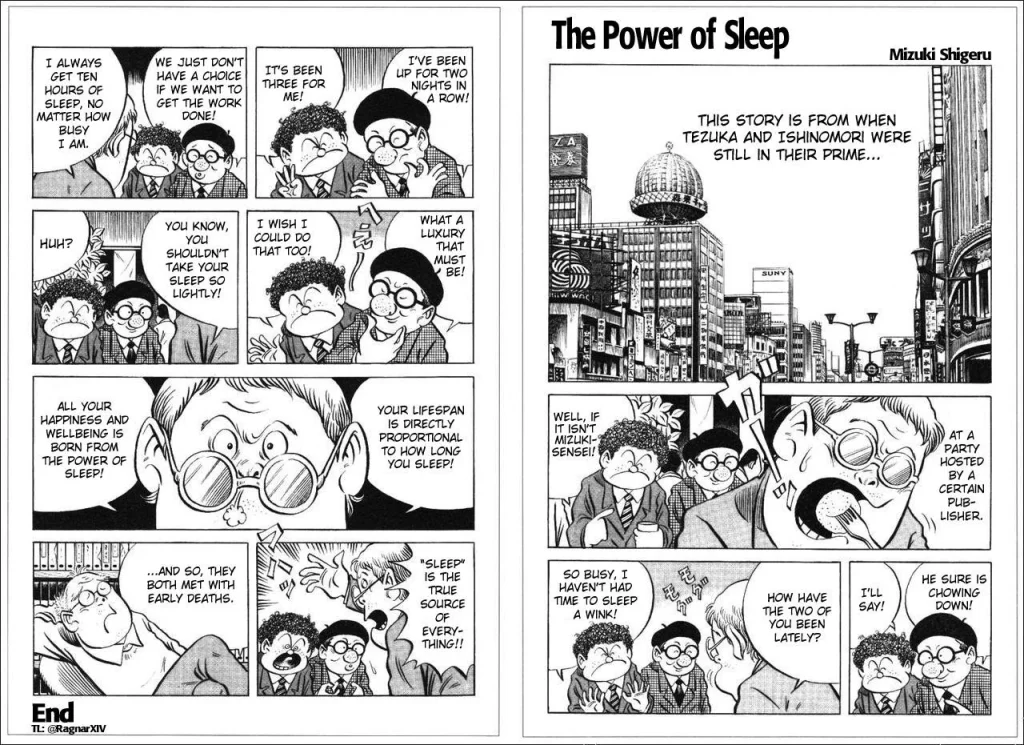
Power of Sleep by Mizuki Shigeru
Great animation comes from a clear mind and a body that doesn’t hurt. Rest isn’t a luxury – it’s a necessity. It’s part of the process. Without it, you can’t grow
as an artist. The sooner you embrace that, the longer you’ll last in the field.
What «Working with Joy» Really Means
Working with joy doesn’t mean being in constant euphoria. It means feeling engaged, curious and challenged. It means knowing you can make mistakes and bounce back. It’s when feedback doesn’t feel like a threat. It’s when you can discuss a scene with teammates and still feel like yourself. It’s when you don’t lose your sense of direction just because someone didn’t like your first version.
Resilience is a skill. It takes time to develop. But once you have it, it changes everything. You stop seeing the job as a grind and start seeing it as a cycle of focus and renewal. That mindset gives you the strength to take on difficult tasks without burning out.
Learn how to find your joy while on your animation path
Advice From People Who’ve Been There
Those who’ve worked in the industry for years will tell you: hero mode doesn’t work. What matters more is building a stable pace that allows you to stay healthy, stay inspired, and keep improving. True mastery isn’t about finishing a shot with your last bit of strength – it’s about showing up week after week with fresh ideas and steady energy. That’s what long-term growth really looks like.
Start listening to your body. If something hurts, it’s not random – it’s a sign. Breaks aren’t laziness – they’re part of balance. Especially when you work with your hands, eyes, spine. Ignoring pain means risking your entire ability to animate.
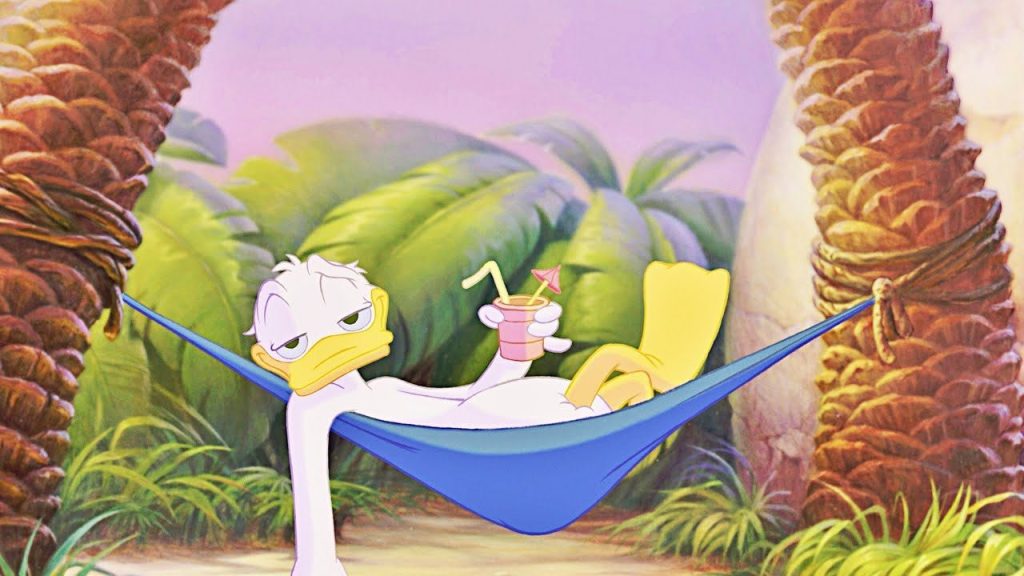
Donald Duck
And don’t be afraid to speak up when you need time. Whether you’re at a studio or freelancing, that conversation is valid. You’re not supposed to be okay all the time. You’re allowed to pause. To rest. To not be productive every second. People around you are often more understanding than you think – but they won’t know unless you tell them.
Check out more tips from professionals on how to improve your portfolio!
What to Do if You’re Already Burnt Out
If you’re reading this and it feels way too familiar – you’re not alone. Almost everyone in animation hits burnout at some point. The important thing now is not to blame yourself. You’re not broken. This industry is intense, and learning how to protect your energy is part of the journey.
The first step is admitting that you’re not okay. The second is giving yourself space. Not pushing through. Not trying to fix everything at once. Just slowing down. Think about what gives you energy again. Maybe it’s taking a walk. Switching projects. Talking with someone who gets it. Reading. Silence. Recovery isn’t weakness – it’s wisdom. It’s your way back to yourself.
Final Thoughts: Growing Without Losing Yourself
Animation is a team sport. And the ones who thrive in it aren’t the ones who work the fastest. They’re the ones who protect their minds, stay curious, share ideas, and last long enough to keep improving. Being an animator isn’t just about technique – it’s about resilience, empathy, and honesty. It’s about staying yourself, even when the schedule is crushing.
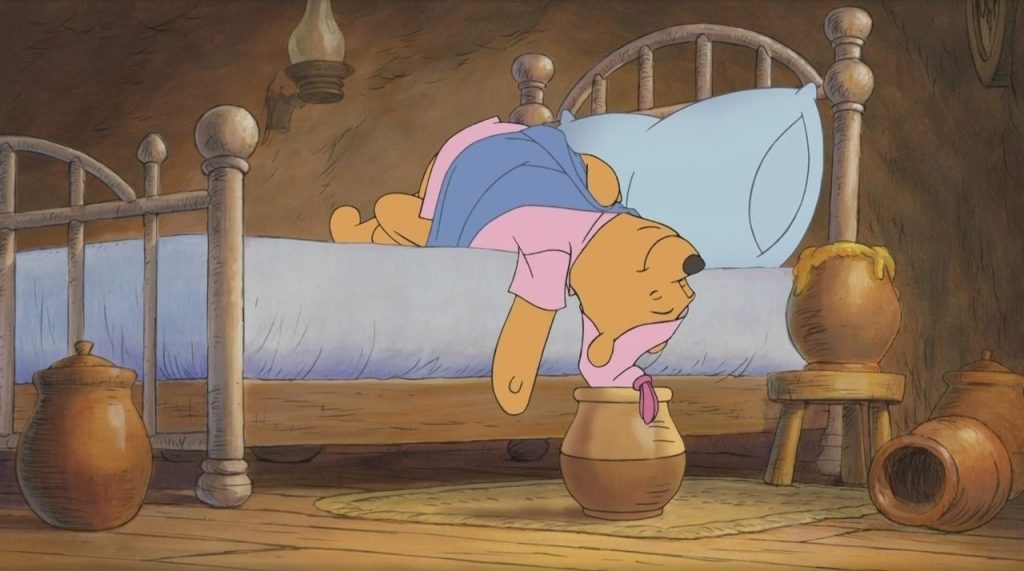
Winnie-the-Pooh
If you want a career that doesn’t just produce scenes but brings you joy for years to come – start by taking care of yourself. That’s not a bonus feature. It’s the foundation.
Want more content like this?
Follow the blog, subscribe to our channel, or check out our course if you’re not only looking to learn animation – but how to work in this industry without burning out. Animation is love – when you do it wisely.
